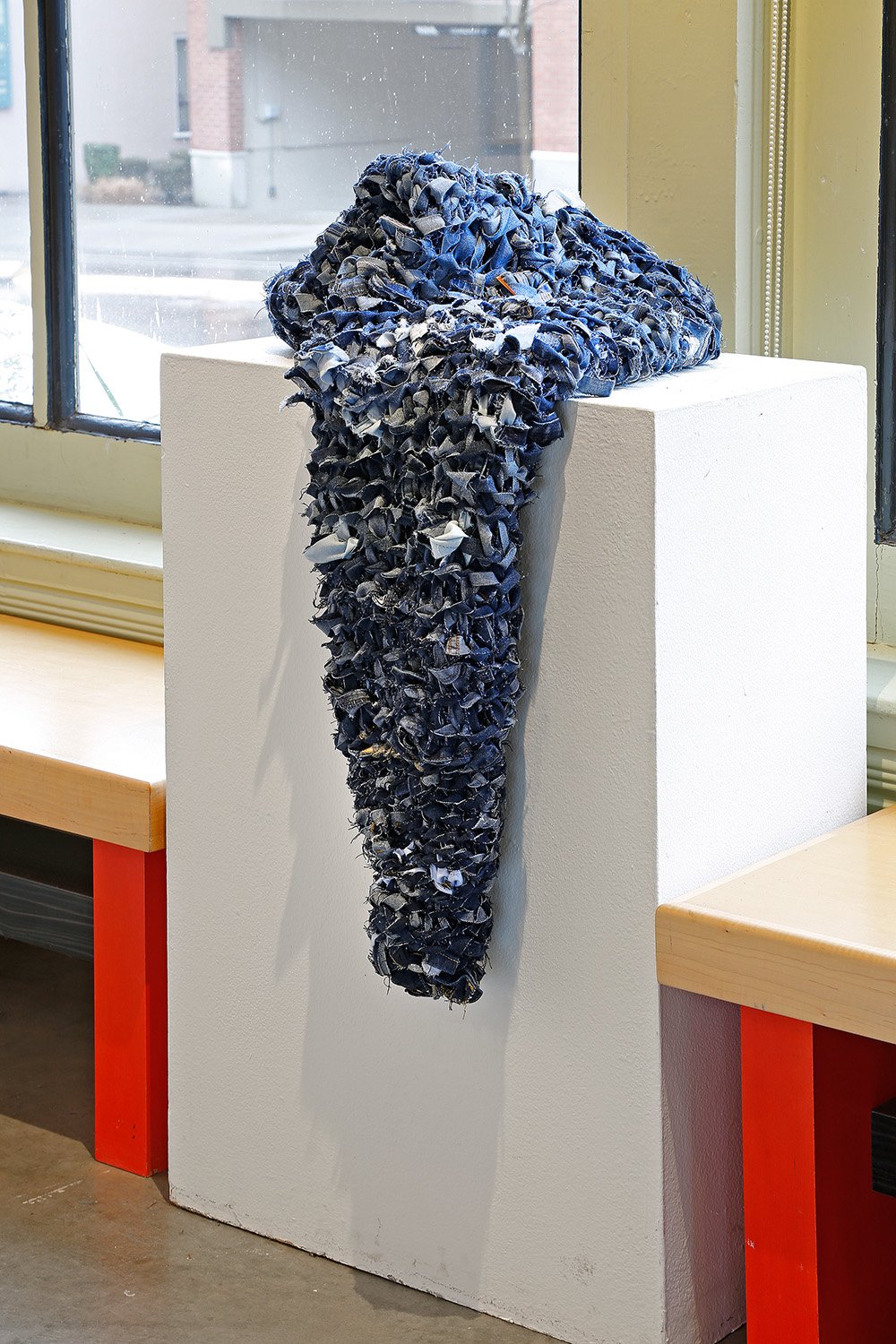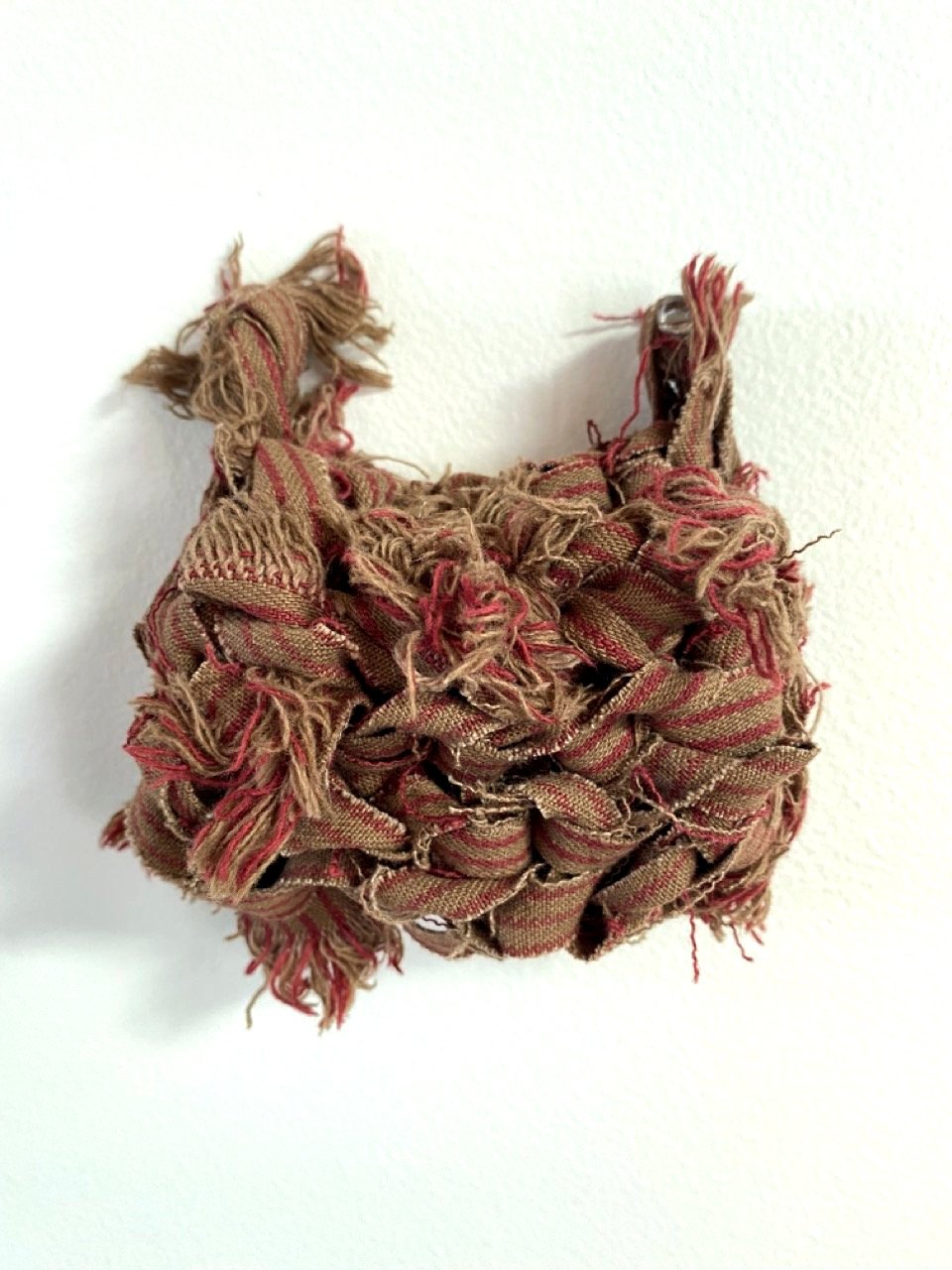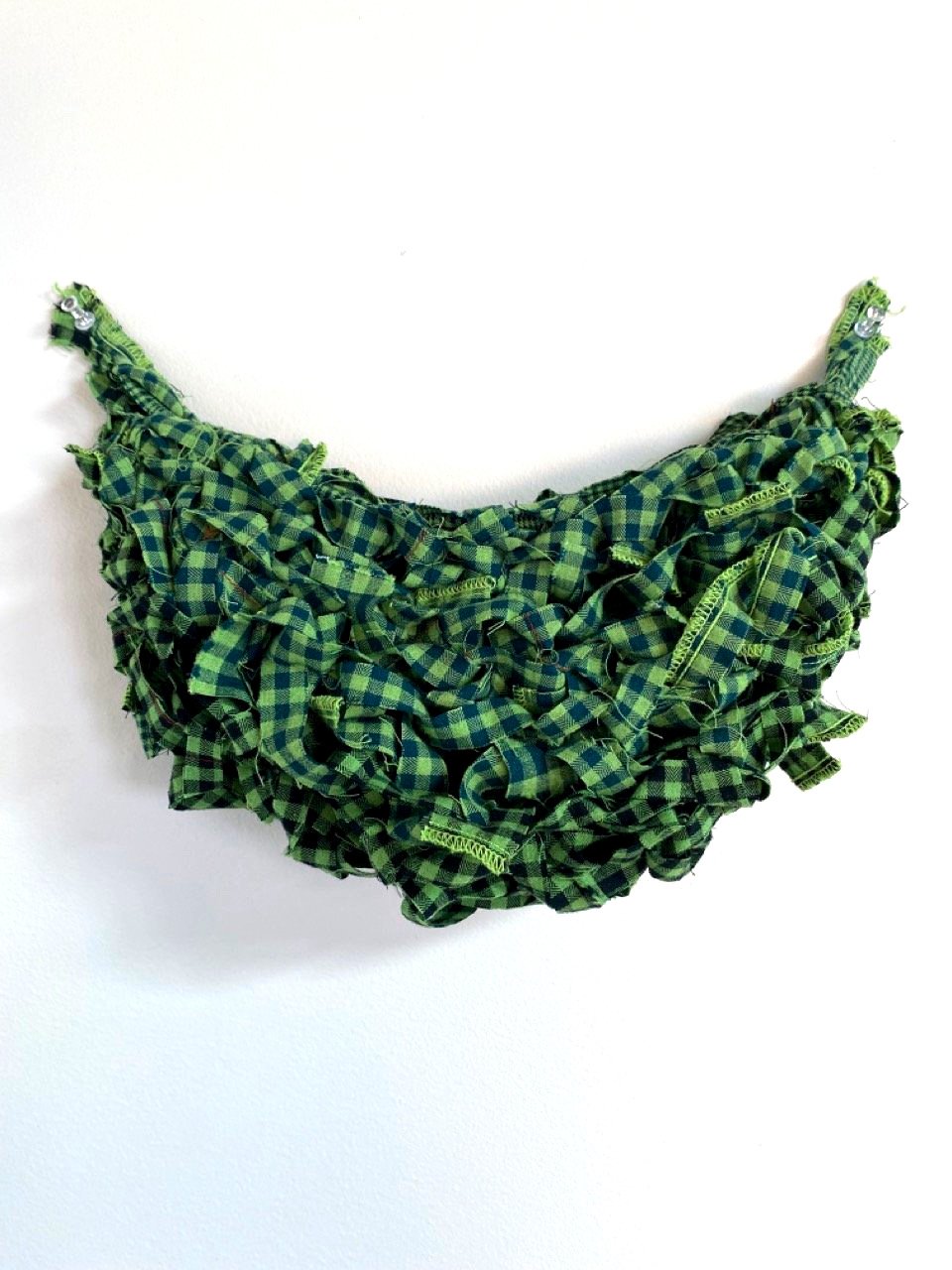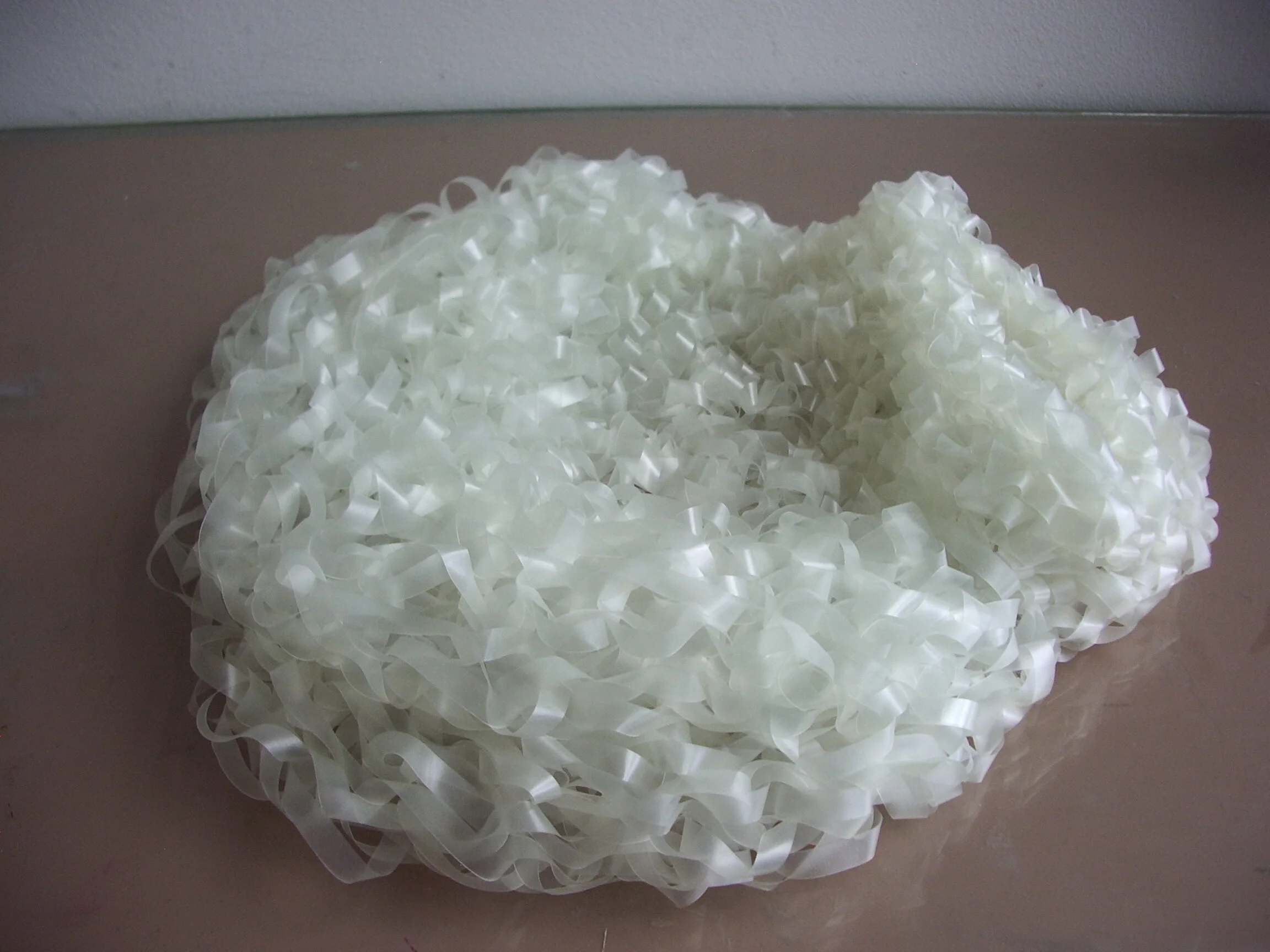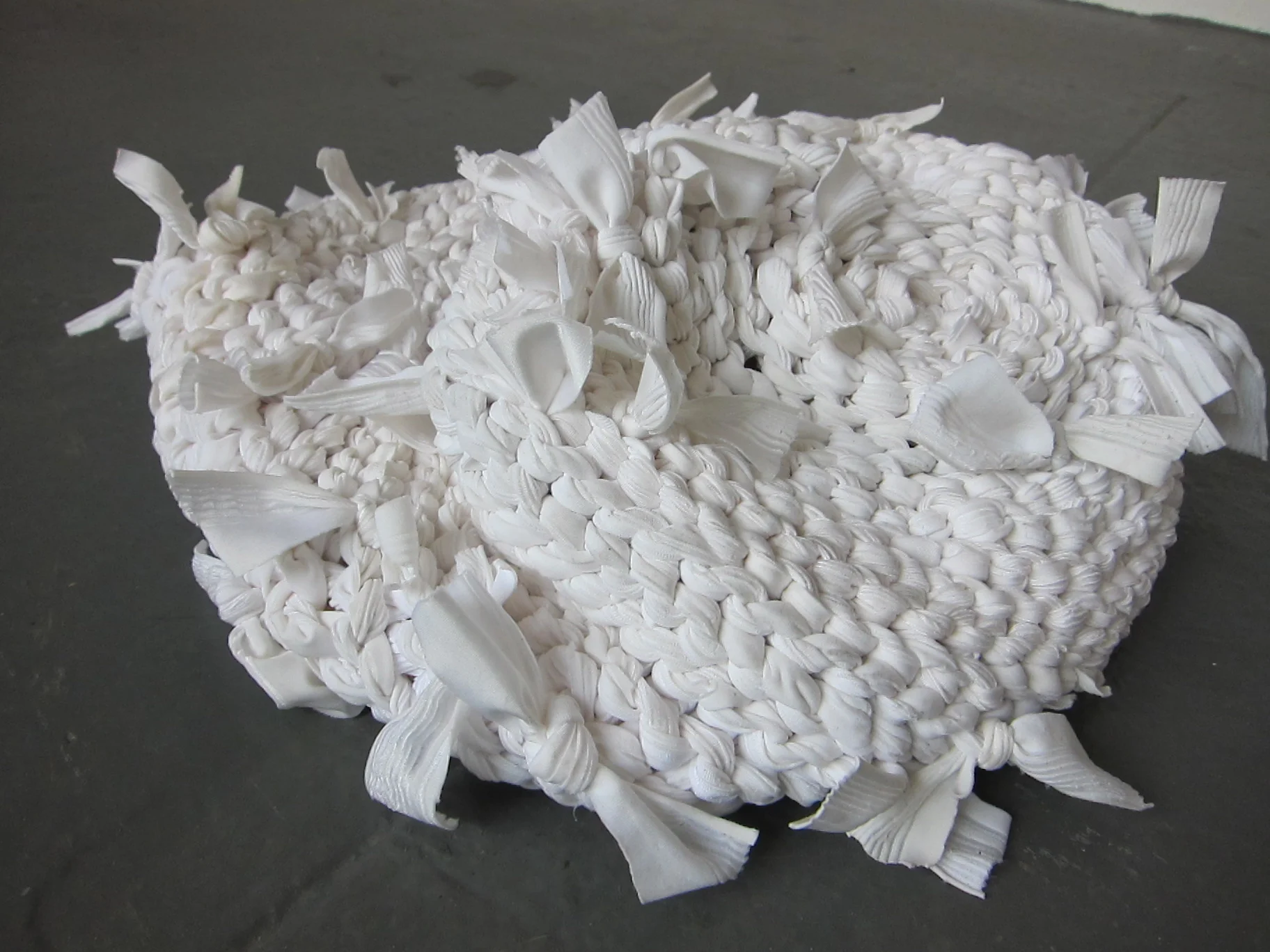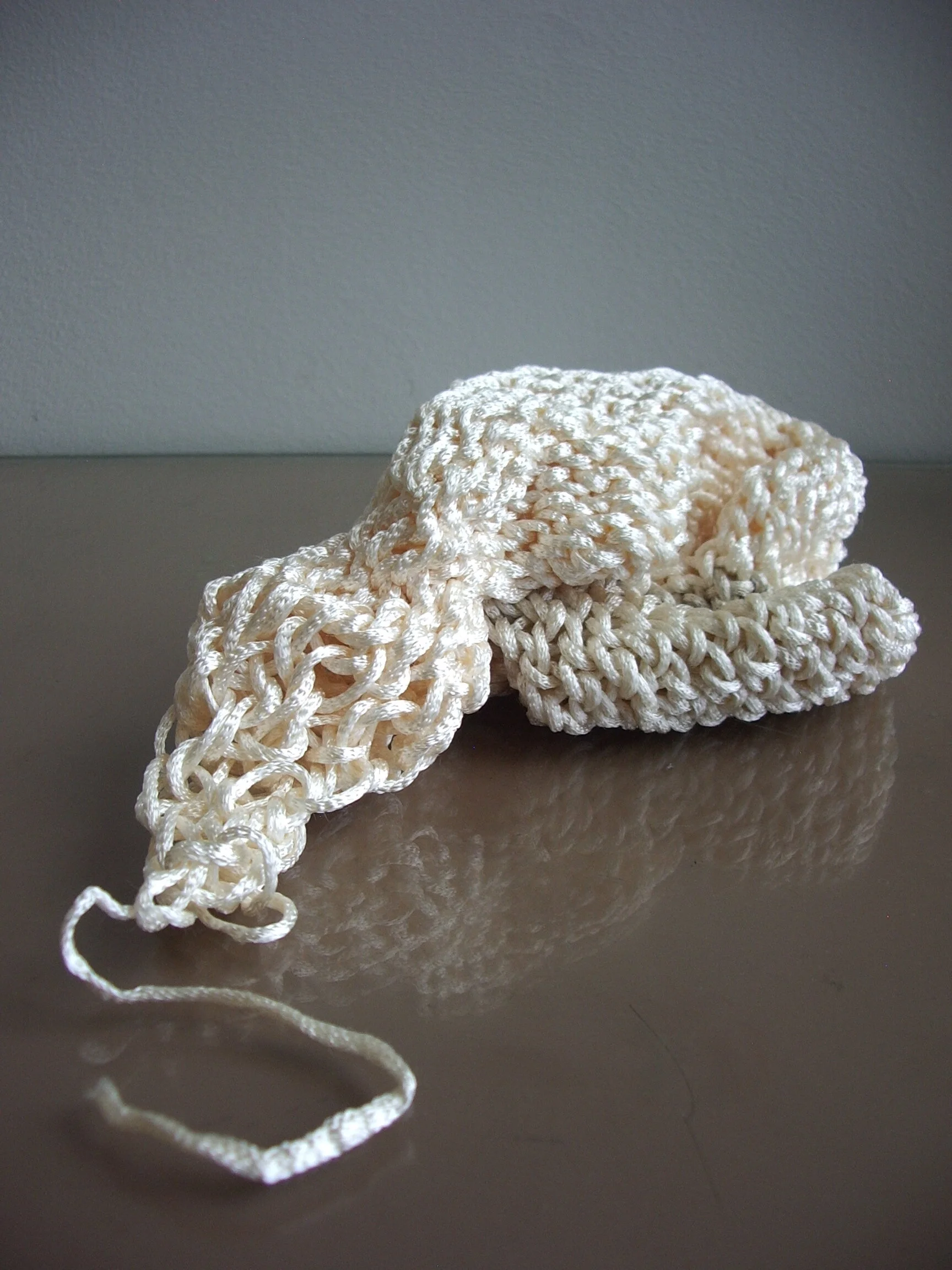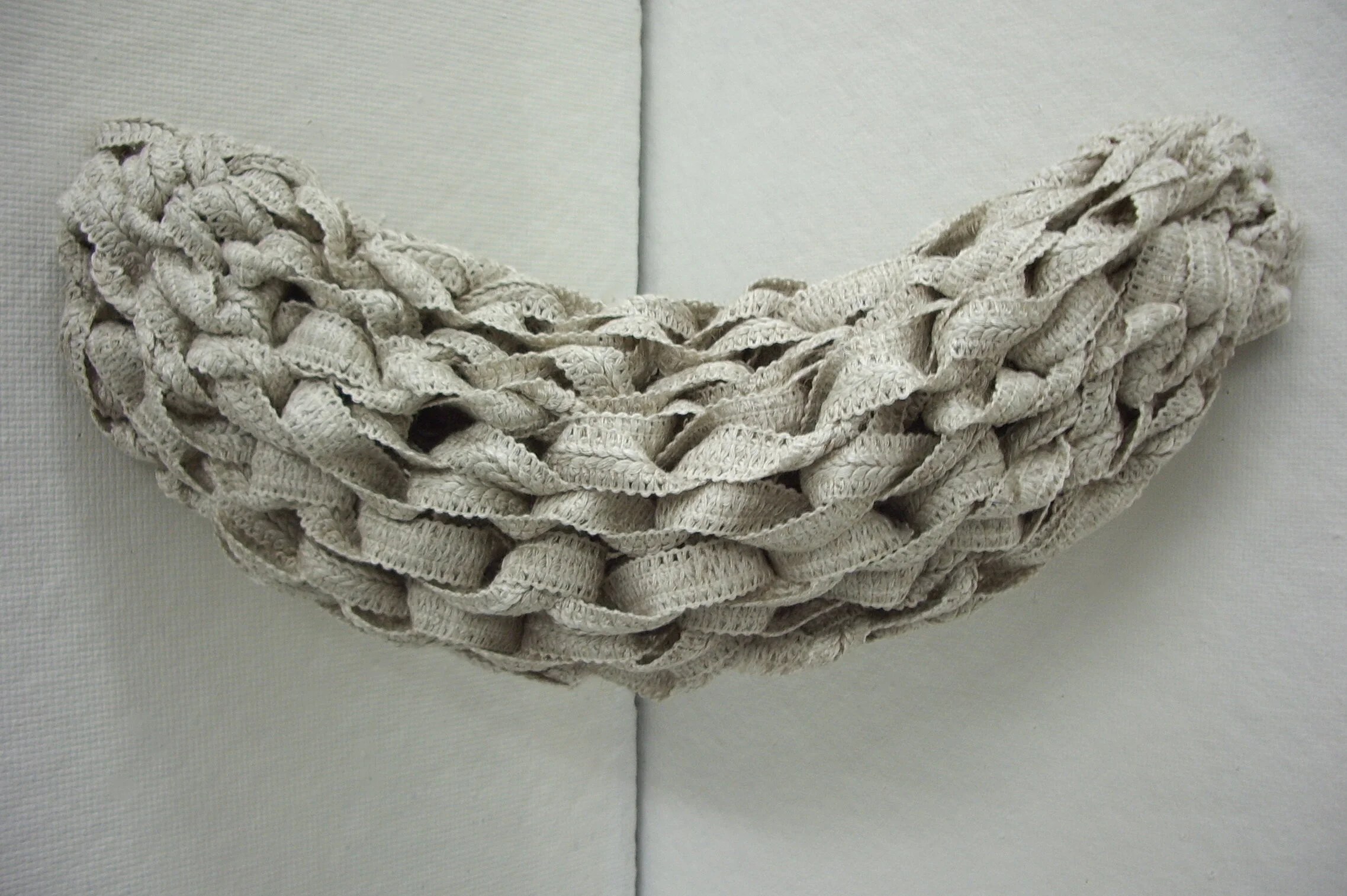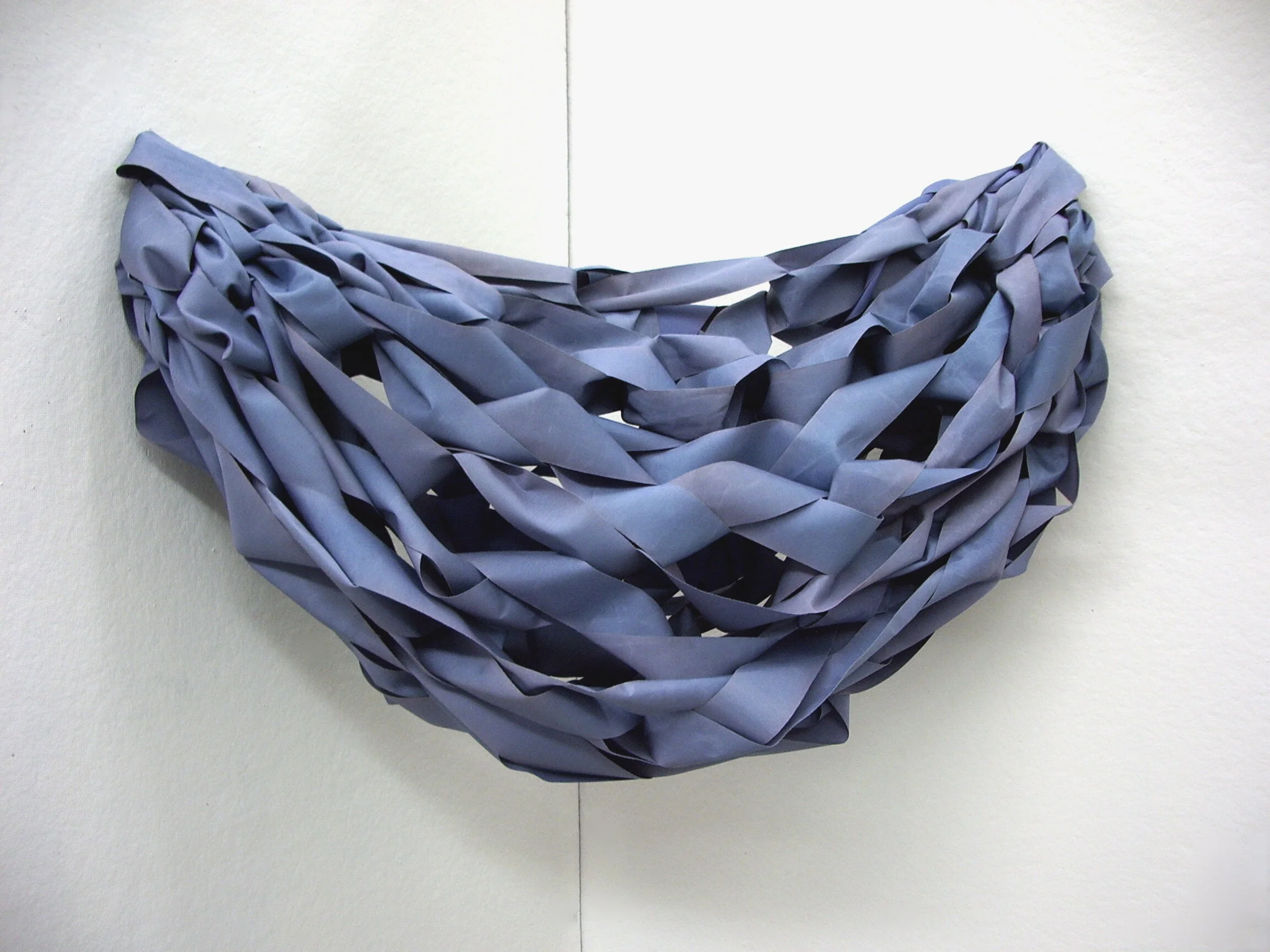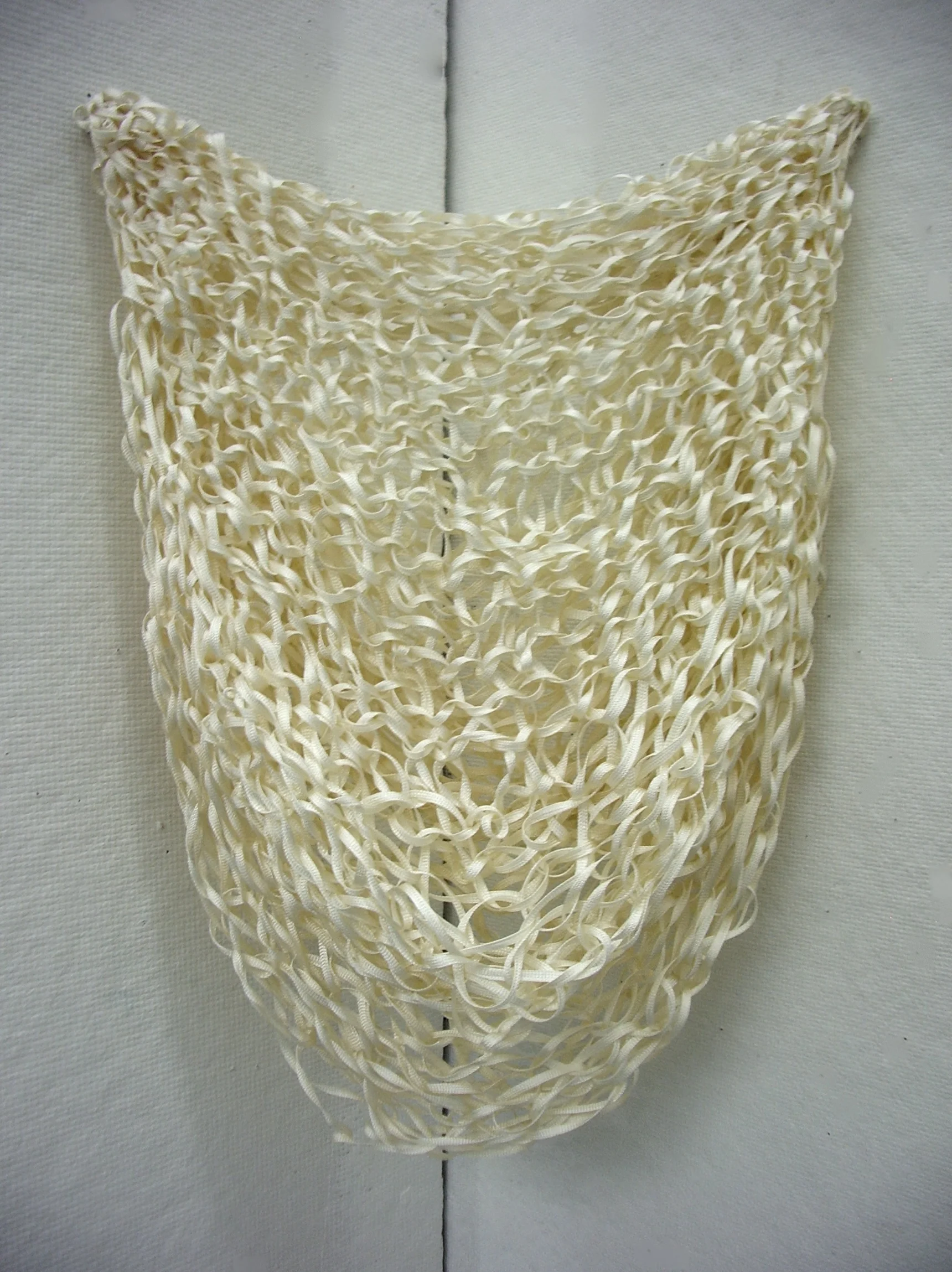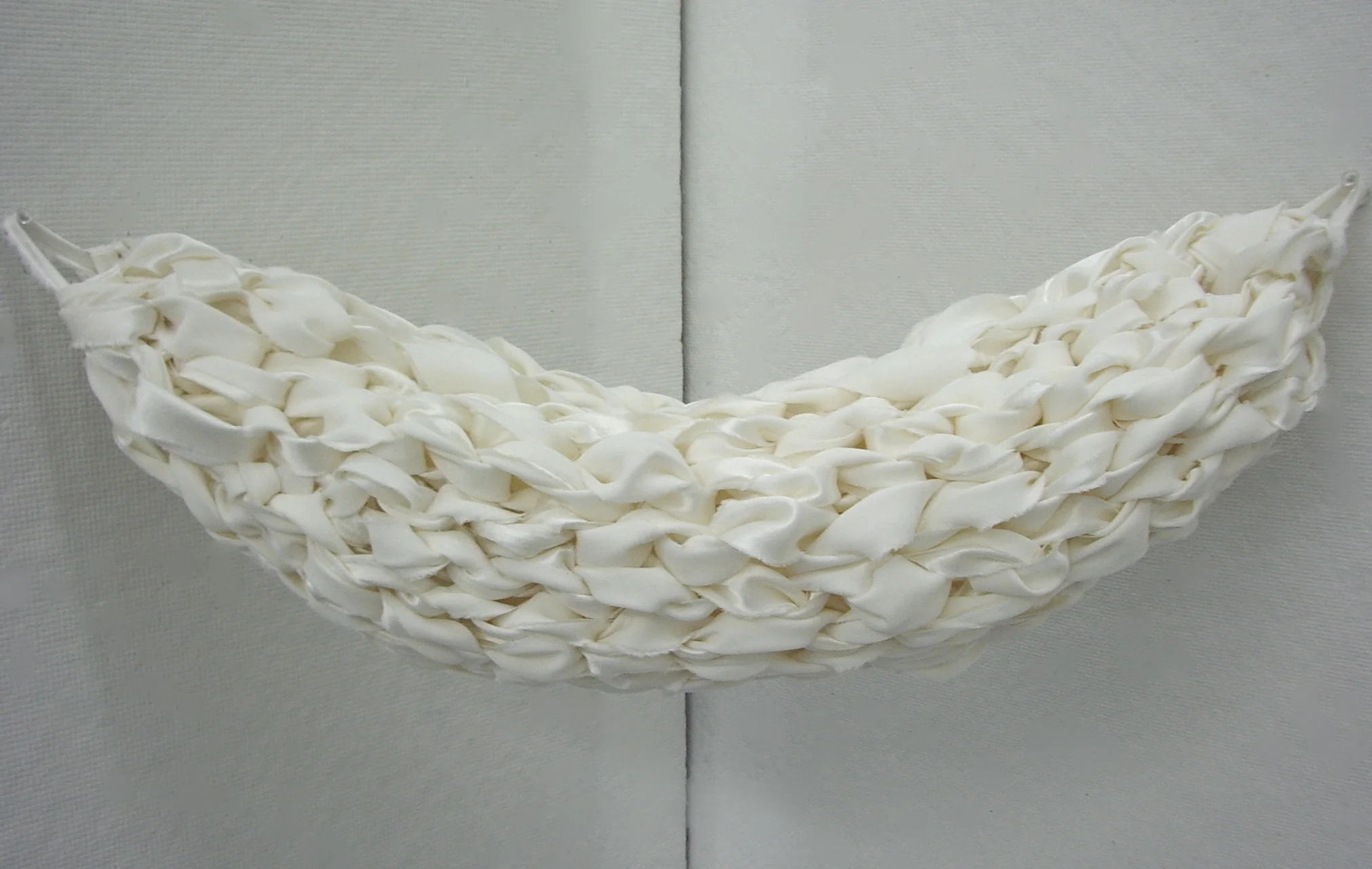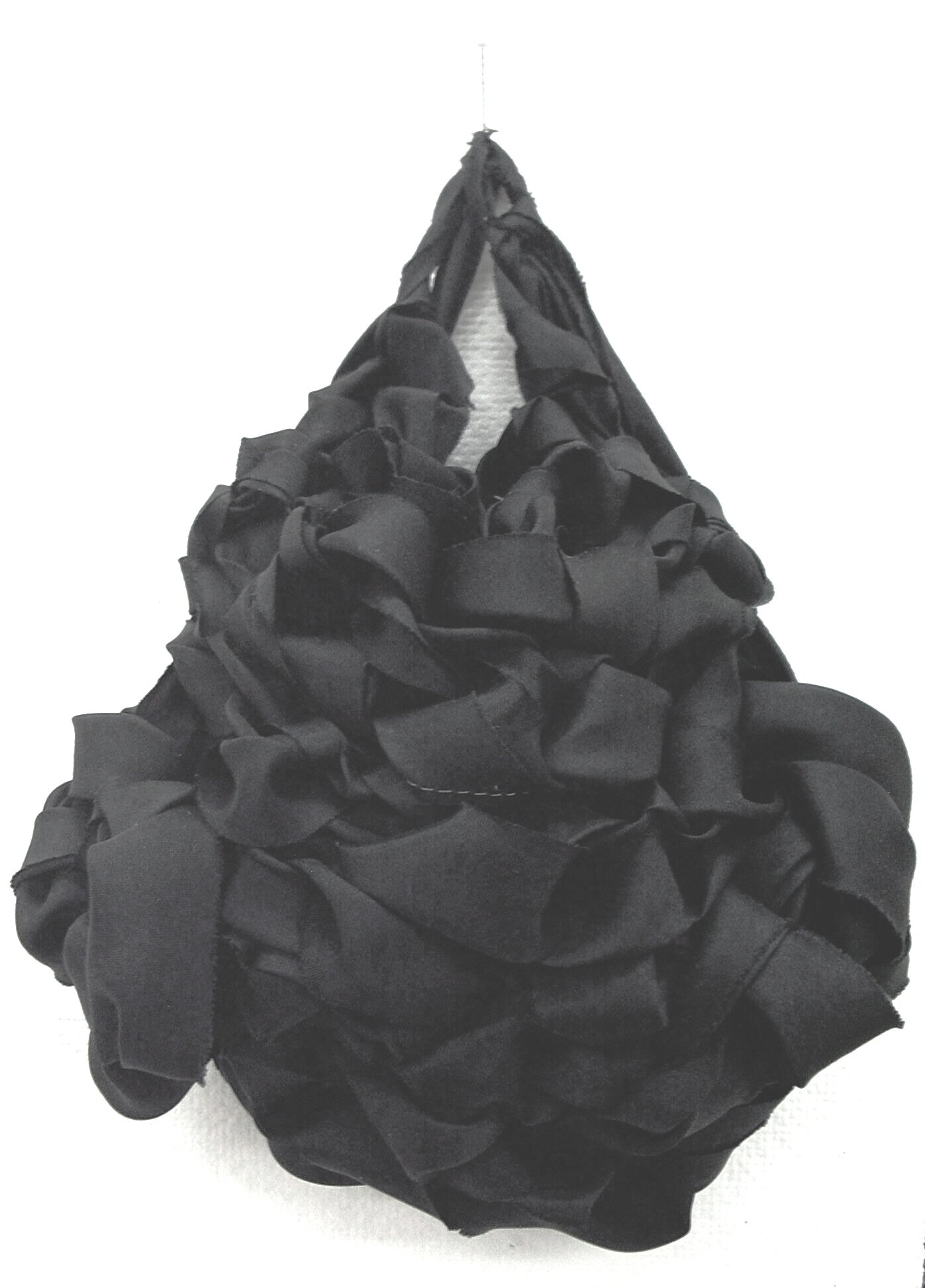Sculpture
Jean Bodies 2010 - present
Prince’s floor sculptures, Jean Bodies, are constructed from donated used jeans, cut up and hand knit together. Her material choice speaks to accessibility and inclusion of all people and being a steward of our world. Using donated jeans nods to the people who wore them and the community relationship of the donors. One of the most common items people wear is a jean. With a range of attributes Prince uses jeans as a vehicle to look at similarities and differences in communities. Donation is also an important part of her project creating relationship, empowering people, and inviting participation in the conversation while pointing to environmental impact.
The Jean Bodies point to a variety of ways that we come together in this life as people. One aspect of these sculptures is how their shapes reference forms found in nature, including the scale of the human body. The titles for these sculptures are culled from a combination of life experiences, and combined with intimate feelings as well as reading. In her Jean Body, Banding together in our humanity, Prince is inspired by an interview of activist and UW runner, Rosalie Fish, who races with a red handprint on her face to raise awareness of violence against indigenous women.
View videos of the Jean Bodies interacting with their environments here.
My heart-felt thanks to the many people that have donated jeans to this project over the years. I am thankful for each of these people for believing in me and making this project possible.
Jean Contributors to date: Adrienne Domingus, Alex Kelly, Amy Pruitt, Annie Bruce, Anya Nabiev, Bill Janecke, Bouma Family, Buy Nothing Alki/Admiral (West Seattle), Chloe Chudina, Dana Rambo, Deborah Chen Van Patten, Desiree Serr, Elizabeth Batchelder, Emily Wenner, Etta Will, Henry Baron, J. Gordon, Jakealyn Turner, James and Kay Janecke, JamesB Notkin, Jeana Frazier, Kathleen Capels, Kelly Crow, Kenski Okobayashi, Kevin McCullough, LeeAnne Beres, Lele Barnett, Lisa and Matt Jousma, Lisa and Micah Aeriett, Loni Gieseking Slytebo, Lori MacDonald, Lydia Peterson, Lynda Lopez, Mark Lenssen, Matty Moore, Megan Prince, Nichelle Keatley, Nichole Halsey, Nyla Bitterman / Cherry Consignment, Olya Bolton, Pamela Rogers, Panida Vilaythong / FJ Consignment, Paul Evans, Peter Melvin, Rhea Herrell, Richard Janecke, Roxanne Heckman Meyer, Sergey Chudin, Sharon Mead, Sherrel Rhys, Sonia Jones, Terri Griffith, Theo Prince, TJ Janecke, Todd Bullock, and William Leaman.
*Anonymous donations were also made, some jeans were found, while others were purchased from Goodwill Donation Centers to keep this project moving along. This list is kept as current as possible.
Remnant Bodies and Remnant Relationships 2006 - present
Intimate, and a little sentimental, Prince’s Remnant Bodies and Remnant Relationships are hand-woven soft sculptures. Her material choice speaks to accessibility and inclusion of all people and being a steward of our world. Frequently made from leftover pieces of cast-off or remnant fiber materials which the artist gathers from her community at large. The works in this series typically range from lap to palm sized and are made from a variety of pliable materials such as cotton, plastic, vintage lace, and suede. Depending on the found condition of each remnant the artist may paint, tear, cut, and/or hand-tie the materials before working them into the finished work. Because the size of each piece is directly related to the quantity of material available, frequently, these sculptures are taken apart and reworked multiple times before reaching completion.
Prince uses remnant materials as a micro look at what we consider as cast-offs in society, serving as a vehicle to think about what we consider unusable or garbage. What items do we cast aside because it has a small hole; what people do we move away from because the conversation has gotten too hard or they are inconvenient? One aspect of these sculptures is how their shapes reference forms found in nature such as rocks or shells. The titles for these sculptures directly reflect the material or color each piece is made with, and occasionally point toward current events. An example of this is Prince’s recent work, Waiting for another to make the words, which is a direct reflection after the Uvalde shooting, on the countless shootings of our most vulnerable people. Prince takes each remnant and turns it into something new and special, giving it new value, a new life, and hope for the future.






